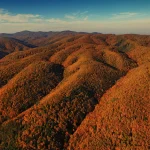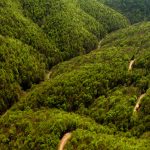The renovation and equipping of the “Pannonian Sea House” is part of the praiseworthy “UNESCO Geopark Geostories” project at the incredible Papuk nature park, which was once in the middle of a sea.
As Poslovni Dnevnik/Marta Duic writes on the 6th of February, 2020, sixteen million years ago, Papuk was an island in the Pannonian sea inhabited by rhinos and being swum around by a now extinct species of shark. This is extremely difficult to imagine today, given that the modern day Papuk nature park is located in Slavonia, far from any sea.
Numerous fossils of now extinct living organisms, mostly marine animals, testify to the ancient past of this “Slavonian archipelago”, located in Velika, within Papuk nature park. The popular continental Croatian nature park has now received a new, impressive exhibition – the Pannonian Sea House.
This visitor-education centre was opened back in late 2019, is part of the already existing Visitor Centre in Velika, and covers an area of 158 square metres. Along with impressive exhibition halls, there are multi-purpose lecture rooms for interactive lectures, a gift shop and even an outdoor classroom.
The renovation and equipping of the “Pannonian Sea House”, worth almost five million kuna, is an important part of the “UNESCO Geopark Geostories” project, which is co-financed by the Ministry of Regional Development and EU Funds. In addition to the Pannonian Sea House, the project also purchased electric and mountain bikes for rent in Velika and in the Jankovac Forest Park.
The adrenaline park was built in Velika last year, and the first eco-park, Duboka, was opened three years ago, powered by solar panels and which has its own recycling yard and biological water purifier. This has made Pozega-Slavonia County, which is otherwise almost entirely overlooked by tourists, a top Croatian destination for anyone considering the environment, as well as for lovers of walking, hiking and recreation.
Otherwise, Papuk nature park had a record number of visitors in 2019, with 52,485 tourists visiting it – almost 50 percent more than a year earlier. There is no doubt that the Pannonian Sea House, as a testament to life as it used to be in the area, will attract new visitors, especially schoolchildren, who will learn about the geological story of this region in both an original and in a technologically advanced way.
In addition to the new tourist attraction, at the end of the year, the directors of five tourist boards gathered in Croatia to jointly promote the beauty and the tourist offer of this often forgotten region, namely Slavonia, and work together to promote and present Slavonia as Croatia’s new tourist destination.
The Slavonia destination project will have an impact on the development of small and medium-sized enterprises (SMEs), as it implies a greater use of new technologies and communication platforms in the promotion and marketing of tourism products, and therefore the greater involvement of local businesses.
Make sure to follow our travel page for more information on Papuk nature park and much more.










